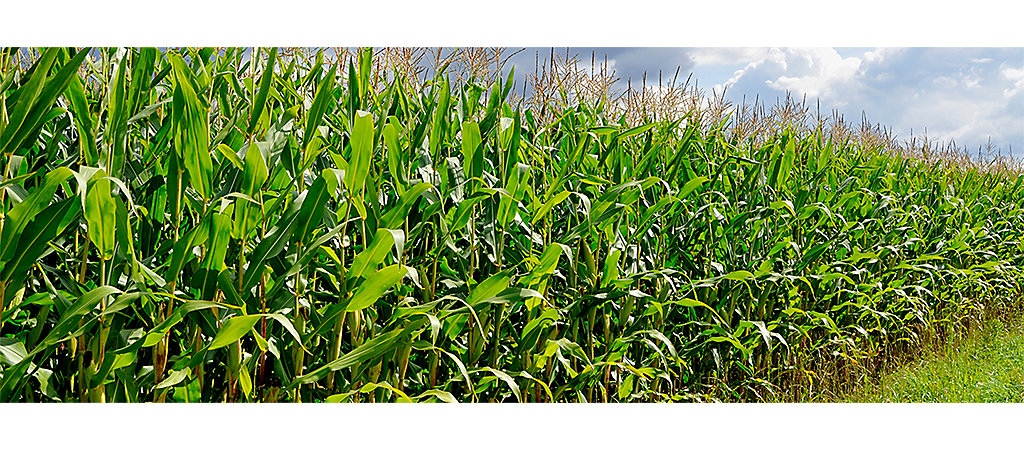The Importance of Corn: Feeding and Fueling the World

The United States runs on corn, both literally and figuratively. In a literal sense, corn contributes 10% of the fuel for all cars in the US. That ethanol accounts for more than forty percent of all the corn produced. Much of the remaining sixty percent of the corn produced goes to livestock feed: it is fuel for the animals that feed the citizens.
The US is the largest producer of this global crop, but it is by no means the only one: According to Chad Hart, Associate Professor of Economics at Iowa State University, and a leading expert on corn. China, the next largest producer, plants nearly the same amount of acreage as the US (97 million acres in 2020), although it yields about twenty-five to thirty percent less. In third place is Brazil, which produces less than half of China’s output.
The vast majority goes to livestock feed and ethanol. Seed genetics continue to evolve, which gives growers better yields. This makes it easier to use corn in an ever-growing and mind-boggling array of applications.
Corn touches our lives in multiple ways on a daily basis. Just step into a supermarket: more than two thousand grocery items contain corn in one form or another. And while you’re stepping, look down. The carpet beneath your feet may be applied using an adhesive containing—you guessed it—corn. It might even be made, in part, from that same remarkable plant.
Professor Hart breaks down corn use in three categories: feed, fuel and fiber.
FEED
By far the biggest use of corn—and the one with longest history—is for livestock feed. While the majority of corn used for animal feed goes to cows, pigs and chicken, says Dr. Hart, “It also enters into feed for our dogs, our cats, our guinea pigs. Corn is truly an animal feed across species.”
The corn fed to animals is field corn, which is not as sweet and tender as the corn we humans like to eat right off the cob. Still, we do eat this field corn, just in a different way. Processing turns it into flakes as cereal, grits, snack food, oil, and sweetener, to name just a few.
Sweet corn bred for direct human consumption, on the other hand, is not only sweeter, but also more tender: it is the stuff of American Independence Day cookouts or the elote that street vendors in Mexico sell. We may eat it on the cob or off, and it doesn’t need processing to be delicious.
FUEL
Iowa farmer and Global Farmer Network board member Bill Horan calls ethanol the rags-to-riches story for corn. “Thirty years ago, we farmers were struggling with excess corn and low prices,” said Horan. “The Corn Growers Association came up with ethanol, which we called gasohol back then, and we promoted it at gas pumps to explain the benefits of cleaner air. Thirty years later it is in every gas tank in the U.S.”
Ethanol is a success story on many levels: it is made from a crop that readily grows in many climates and parts of the world, and as Bill explains ethanol, helps petroleum burn cleaner, reducing carbon emissions by about 25 percent.
Nothing goes to waste in the world of corn. When ethanol is produced, the distilled grains become concentrated protein-rich livestock feed, while the remaining carbon dioxide is used for soft drinks and dry ice.
FIBER
While feed and fuel represent over ninety percent of the use for corn, there are also many other relatively common uses. These may seem small in comparison to the enormous corn industry, but they can play a very big role in other sectors.
The fiber from corn is used in an array of industrial applications, such as the manufacture of bioplastics. It is used as insulation in cars and in construction, including as biodegradable matter around door and window frames. It might even show up in the carpet consumers put down in their homes.
Corn fiber is also used to make adhesives, especially in cases like, once again, carpeting where a firm hold combined with the ability to remove the adhesive is desirable. Similarly, corn is an ingredient in package labels, biodegradable inks, and bio-renewable packaging.
Corn fuels our lives in more ways than most consumers will ever know. It is beneath our feet, in our cars, and an invaluable part of our diets, both directly and indirectly. The world does, truly, run on corn.


